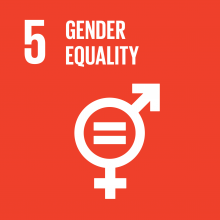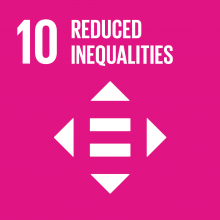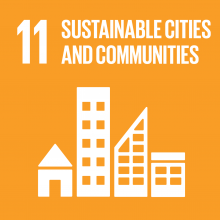In July 2019, the City of Los Angeles published its first Voluntary Local Review (VLR), presenting the report from Canada’s Permanent Mission to the UN at an event co-hosted by the Organization for Economic Cooperation and Development (OECD) and the World Council on City Data (WCCD) during the High Level Political Forum on Sustainable Development. By presenting a Voluntary Local Review, L.A. became one of the first cities in the world to uphold a commitment to transparency, publish SDG indicator data online, and share its progress and opportunities in reaching global targets for gender equity, homelessness, housing, climate action, education, economic growth, and more.
In its first VLR the City of Los Angeles highlighted initiatives across eight of the seventeen Global Goals, beginning with two priority goals for Los Angeles, SDG 5 (Gender Equality) and SDG 11 (Sustainable Cities and Communities), followed by a summary of those goals under review as part of the 2019 High Level Political Forum on Sustainable Development, SDGs 4 (Quality Education), 8 (Decent Work and Economic Growth), 10 (Reduced Inequalities), 13 (Climate Action), and 16 (Peace, Justice and Strong Institutions). Also included is a case study on SDG 15 (Life on Land) that speaks to L.A.’s work on Biodiversity, and an appendix that maps all 17 Goals and 169 SDG targets to existing City plans and policies.
METHODOLOGY
The City of Los Angeles developed and applied a four-phase process for implementing the SDGs at the local level.
1. MAPPING AND ALIGNMENT
Produced a baseline of current “activity,” broadly defined as any plans, policies, initiatives, measures of impact, services, or business areas that related back to a Goal or its subordinate targets. This assessment was critical for several reasons: to identify the internal and external policy owners and stakeholders for each SDG target, to understand what progress had already been made, and to identify where challenges remained.
2. GAP ANALYSIS
An analysis of where shortfalls or gaps exist when considering the City’s activities mapped to the SDGs. Given the fact that university students used mostly passive research for phase 1, engaging with policy owners was critical to differentiate a true gap from an absence of published information. The resulting analysis shone a light on where certain SDG targets, like those related to public health, are governed by L.A. County, rather than the City.
3. LOCALIZATION
The notion of localizing the SDGs has evolved from implementing the SDGs at a local (i.e., subnational) level to adapting the SDGs, their targets, and indicators to fit a local context and setting. Localization should ensure that a community’s priorities, needs, resources, and people are at the center of its sustainable development. In Los Angeles, this third phase entailed validating revisions to the framework with stakeholders, while continuing to map and analyze corresponding indicators and data sources. Simply put, now that we had identified a target, we could decide how best to locally measure it. This alignment of data to the framework will provide another quantitative baseline on our progress toward the Goals, and more insight into where we may be able to accelerate. Even where the data shows success, we will want to ensure that when disaggregated by demography and geography, success is equitably distributed across our entire community.
4. MOBILIZATION
Mobilization draws on our cumulative work to identify new ideas, new partnerships, and new initiatives that may foster progress. As we begin to scope these mobilization efforts, we also want to recognize innovative efforts outside the City and the public sector, and source great ideas from all of our neighbors here in the creative capital of the world. In this mobilization phase, it will be critical to engage across sectors and share what we have learned with stakeholders. This will deepen our collective understanding of effective activities and essential data related to key targets. Consistent throughout all four phases of our work has been and will continue to be a commitment to share the experience with our partners throughout Los Angeles and the world.



